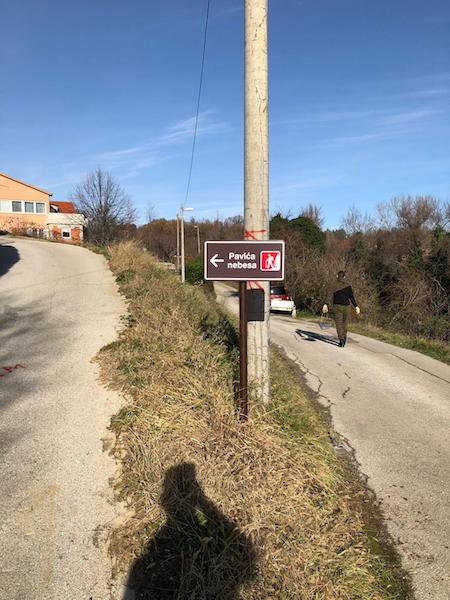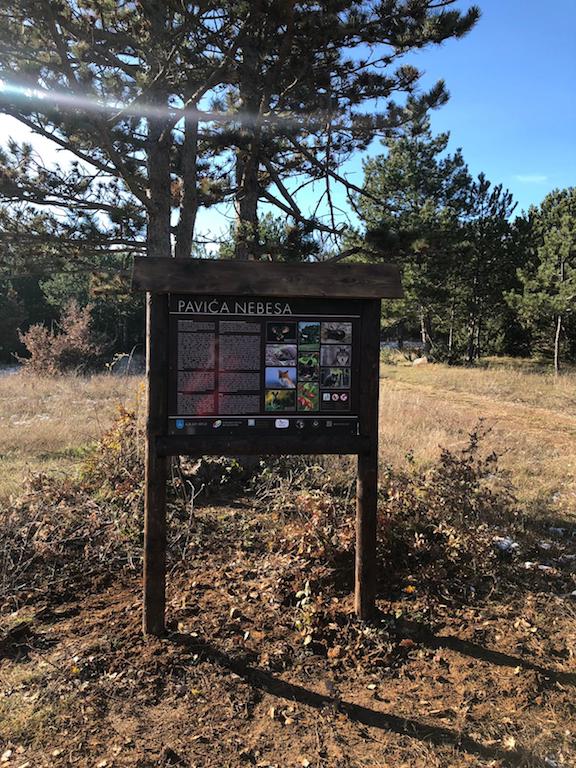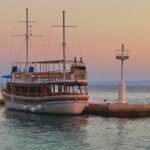December 20, 2018 – The Tourist Board of Sinj, with the support of the Tourist Board of Split-Dalmatia County and the City of Sinj, and in cooperation with the Croatian forests and BIOM association, has upgraded and marked the Pavića Nebesa walkway.
Since the Pavića nebesa walkway is a favorite of locals, but also tourists, the Sinj Tourist Board decided to give it an upgrade, and implemented a bird watching area, sitting benches, bird houses, info tablets and signposts. These activities were carried out with the support of the Tourist Board of Split-Dalmatia County and in cooperation with the Croatian forests in Sinj, the Biom – Sinj association and the Sinj company Naprijed d.o.o.
Distinguished professor Velimir Borković once said about Pavića nebesa: “Pavića nebesa is a mountainous hill that crosses the northwest of Sinj. In hypermetric, it has 400 isohypses, and the peak reaches a modest 513 meters and is less than 200 meters higher than the center of Sinj. The mentioned isohypse mainly accompanies four local roads that run through the slopes of the Nebesa.”
Nebesa has a complex petrographic structure in which carbonates (conglomerates and breccia) prevail, with layers of marl, clay and eruptive traces. The annual rainfall is around 1300 mm, and the complex petrographic structure under the surface keeps significant amounts of water and sparingly divides them into numerous bursts at the foot. According to the petrographic substrate and the sub-Mediterranean climate, there once was the native vegetation of oak groves (Quercus pubescens), flowering ash (Fraxinus ornus), hornbeam (Carpinus orientalis) and cade juniper (Juniperus oxycedrus), though it was degraded by the human footprint, and replaced predominantly by black pine (Pinus nigra), with rare ancestors – oak, ash and hornbeam.
Vineyards, orchards and gardens are planted on the slopes today. Currently, the most common shrubs of vegetation are blackberry (Rubus ulmifolis), Cornelian cherry (Cornus mas), dog rose (Rosa canina) and blackthorn (Prunus spinisa). Of the edible plants, there are still several types of fungus (Agaricus macrosporus, Agaricus campestris Cantharellus cibarius and Infundibulicybe geotropa), and of the healing medicinal plants, there is elder (Sambucus nigra), winter savory (Satureja montana), curry plant (Helichrysum italicum), grass (Teucrium montanum) and sage (Salvia officinalis).

The animal world is rich in species. You can still encounter the Northern White-Breasted Hedgehog (Erinaceus roumanicus), European hares (Lepus europaeus), red foxes (Vulpes vulpes), sometimes deer (Sus scrofa), and even wolves (Canis lupus).
If you look up, you will see the common wood pigeon (Columba palumbus), Eurasian golden orioles (Oriolus oriolus) or Eurasian woodcocks (Scolopax rusticola L.), the Eurasian scops owl, the Tawny owl, or the common blackbird.
The most intriguing insect is certainly the stag beetle (Lucanus cervus). Not all inhabitants of Nebesa are friendly, however, and it is better to avoid an encounter with the horned viper (Vipera ammodytes) which is still rare in Nebesa.

The Sinj Tourist Board hopes that the new paved path will serve as a natural attraction for tourists who visit the destination through the hiking, as well as birdwatching, by which the surrounding forests serve as a natural habitat.
Only half an hour from the city center, Pavića Nebesa could become a place for educating children about the importance of nature conservation.
Moreover, on the western part of the promenade towards the village of Lučane, there is the town of Šušanj where archaeologists and historians placed the site of the legendary Dalmatae fort Setovi. This was where the last battles of Dalmatae were waged with the Roman legions (34-33 BC) led by Octavian – later Roman Emperor Octavian Augustus.
To learn more about Inland Dalmatia, follow TCN’s dedicated page.








